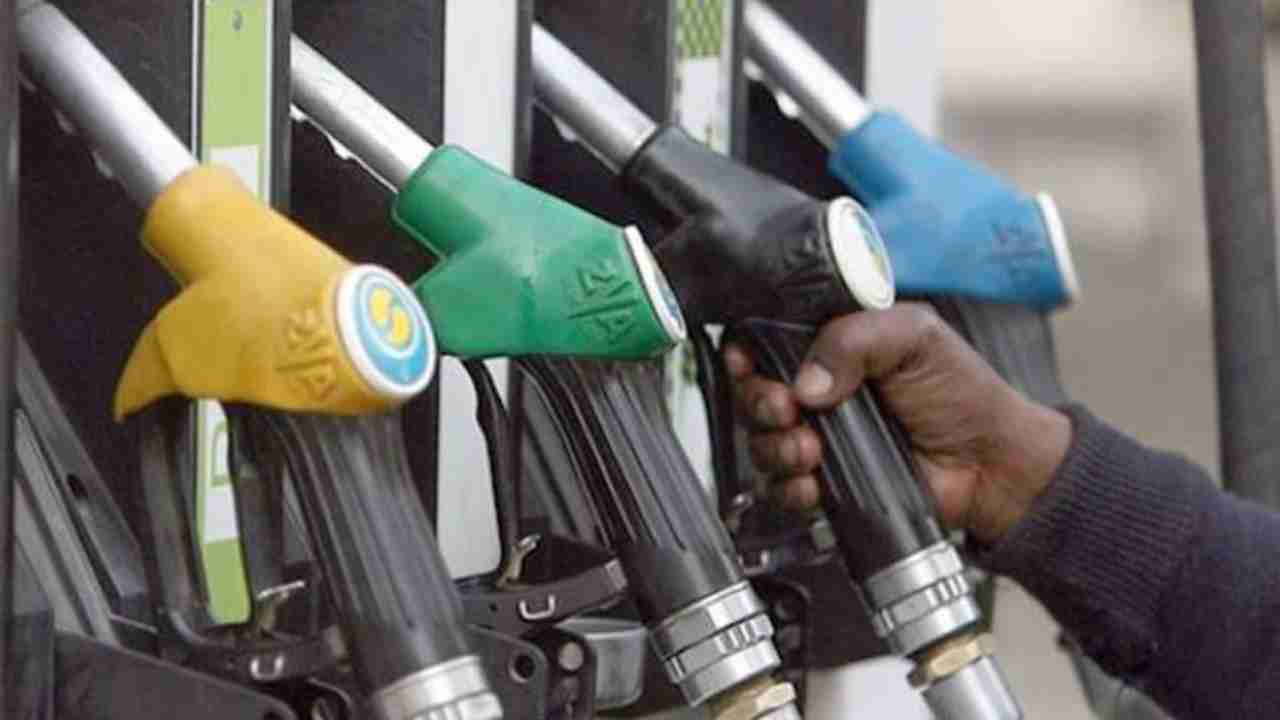Petrol Price June 7 2023: Petrol is a necessary commodity, primarily for commercial and private transportation. The price of petrol levied at petrol stations represents the retail price that consumers must pay. Prices for petrol are determined by state-owned Oil Marketing Companies (OMCs) such as Bharat Petroleum, Indian Oil, and Hindustan Petroleum, under the supervision of the PPAC (Petroleum Planning and Analysis Cell), which is part of the Ministry of Petroleum and Natural Gas. Each day at 6:00 a.m., fuel prices are adjusted in India. This ensures that fuel consumers and dealers are informed of even minute fluctuations in global oil prices. The price of a litre of petrol in India is currently 106.31.
| CITY | PETROL PRICE |
|---|---|
| Agra | 96.35 ₹/L |
| Ahmedabad | 96.42 ₹/L |
| Allahabad | 96.65 ₹/L |
| Aurangabad | 112.97 ₹/L |
| Bangalore | 101.94 ₹/L |
| Bhopal | 108.65 ₹/L |
| Bhubaneswar | 103.19 ₹/L |
| Chandigarh | 96.20 ₹/L |
| Chennai | 102.63 ₹/L |
| Coimbatore | 103.11 ₹/L |
| Dehradun | 95.28 ₹/L |
| Delhi | 96.72 ₹/L |
| Erode | 103.12 ₹/L |
| Gurgaon | 97.18 ₹/L |
| Guwahati | 96.01 ₹/L |
| Hyderabad | 109.66 ₹/L |
| Indore | 108.68 ₹/L |
| Jaipur | 108.48 ₹/L |
| Jammu | 97.50 ₹/L |
| Jamshedpur | 99.77 ₹/L |
| Kanpur | 96.26 ₹/L |
| Kolhapur | 111.44 ₹/L |
| Kolkata | 106.03 ₹/L |
| Kozhikode | 105.89 ₹/L |
| Lucknow | 96.57 ₹/L |
| Ludhiana | 96.81 ₹/L |
| Madurai | 103.21 ₹/L |
| Mangalore | 101.13 ₹/L |
| Mumbai | 111.35 ₹/L |
| Mysore | 101.46 ₹/L |
| Nagpur | 97.04 ₹/L |
| Nashik | 111.74 ₹/L |
| Patna | 107.24 ₹/L |
| Pune | 110.88 ₹/L |
| Raipur | 102.45 ₹/L |
| Rajkot | 96.19 ₹/L |
| Ranchi | 99.84 ₹/L |
| Salem | 103.39 ₹/L |
| Shimla | 97.58 ₹/L |
| Srinagar | 102.11 ₹/L |
| Surat | 96.31 ₹/L |
| Thane | 111.49 ₹/L |
| Trichy | 103.08 ₹/L |
| Vadodara | 96.08 ₹/L |
| Varanasi | 97.39 ₹/L |
| Visakhapatnam | 110.48 ₹/L |
| Faridabad | 97.49 ₹/L |
| Ghaziabad | 96.58 ₹/L |
| Noida | 96.79 ₹/L |
| Thiruvananthapuram | 107.71 ₹/L |
Impact of Variable Petrol Prices on Everyday Life
The significance of petrol and other fuels in our everyday existence is increasing. As the population increases, the quantity of vehicles also increases. Typically, a rise in the price of petrol has a domino effect on the prices of other commodities, affecting the daily lives of the impoverished.
Companies Responsible for Oil Production and Exploration These companies are in charge of oil production and exploration. Cairn India, Reliance Industries, Oil and Natural Gas Corporation (ONGC), and Oil India are among the leading competitors in this market segment. Only 25% of the nation’s oil needs are met by these corporations; the remainder must be imported.
Oil refineries are responsible for transforming and refining crude oil into a variety of petroleum products, including gasoline, diesel, kerosene, LPG, etc. Reliance Industries Ltd, Nayara Energy Ltd, and Bharat Petroleum Corporation Ltd are the leading companies in this market segment.
Oil Marketing Corporations (OMCs) are responsible for the marketing, sale, and distribution of petroleum and petroleum products to businesses and retailers. Reliance Industries, Essar, Indian Oil Corporation, Bharat Petroleum Corporation, and Hindustan Private Corporate are included in this segment.
Individuals or organisations that own fuel stations are referred to as dealers. After deducting profit margins and taxes, they sell petrol to consumers.
Gold Rate in India, June 7, 2023: Real-Time Gold Rate Updates for Major Cities (newsd.in)
Components of India’s Petrol Prices
The components of Petrol Prices in India are as follows:
- Cost of crude oil and shipping expenses
- Refinery Transfer Price (or RTP) is the cost incurred by OMCs to transform crude oil into refined unleaded.
- Profit Margin of OMCs Federal and State Taxes
- Commission paid by a dealer
Factors Influencing India’s Petrol Prices
Cost of Petroleum
Changes in the price of crude oil on the international market have a direct effect on the price of crude oil on the domestic market; this is one of the most significant factors contributing to the rise in petrol prices on the domestic Indian market. Increased international demand, low production rates, and political unrest in crude oil-producing nations have a substantial effect on gasoline prices.
Enhanced Demand
The economic expansion of India and other developing nations drives an increase in demand for unleaded and other essential fuels. In recent years, the number of people who own private vehicles has increased, resulting in an increase in demand for petrol in India and a subsequent increase in petrol prices in India.
The disparity between Supply and Demand
When supply increases, fuel prices fall, and vice versa. Typically, oil refining and marketing companies hold crude oil inventory for up to six weeks, which influences the cost of gasoline and petroleum products.
Dollar to Rupee Exchange Rate
The exchange rate between the rupee and the dollar is another significant factor influencing petrol prices in India. The expenses of Indian oil companies are denominated in rupees, while they pay in dollars for imported oil. When crude oil prices decline but the rupee weakens against the dollar, oil refiners realise diminished profits. On the other hand, oil companies benefit when the rupee strengthens against the dollar and the price of crude oil declines.
Ratio de consommation des raffineries
RCR is a crucial factor to contemplate. When OMCs import crude oil, it is sent to refineries for additional processing. A reduced refinery consumption ratio reduces the amount of refined petrol available for sale, thereby increasing the price of petrol.
Tax Levels
The prices of diesel and other petroleum products vary based on the fuel tax policies of local governments. When the government of India increases fuel taxes, oil companies in India increase the price of petrol to recoup losses and sustain marginal profits in the Indian oil industry.

















